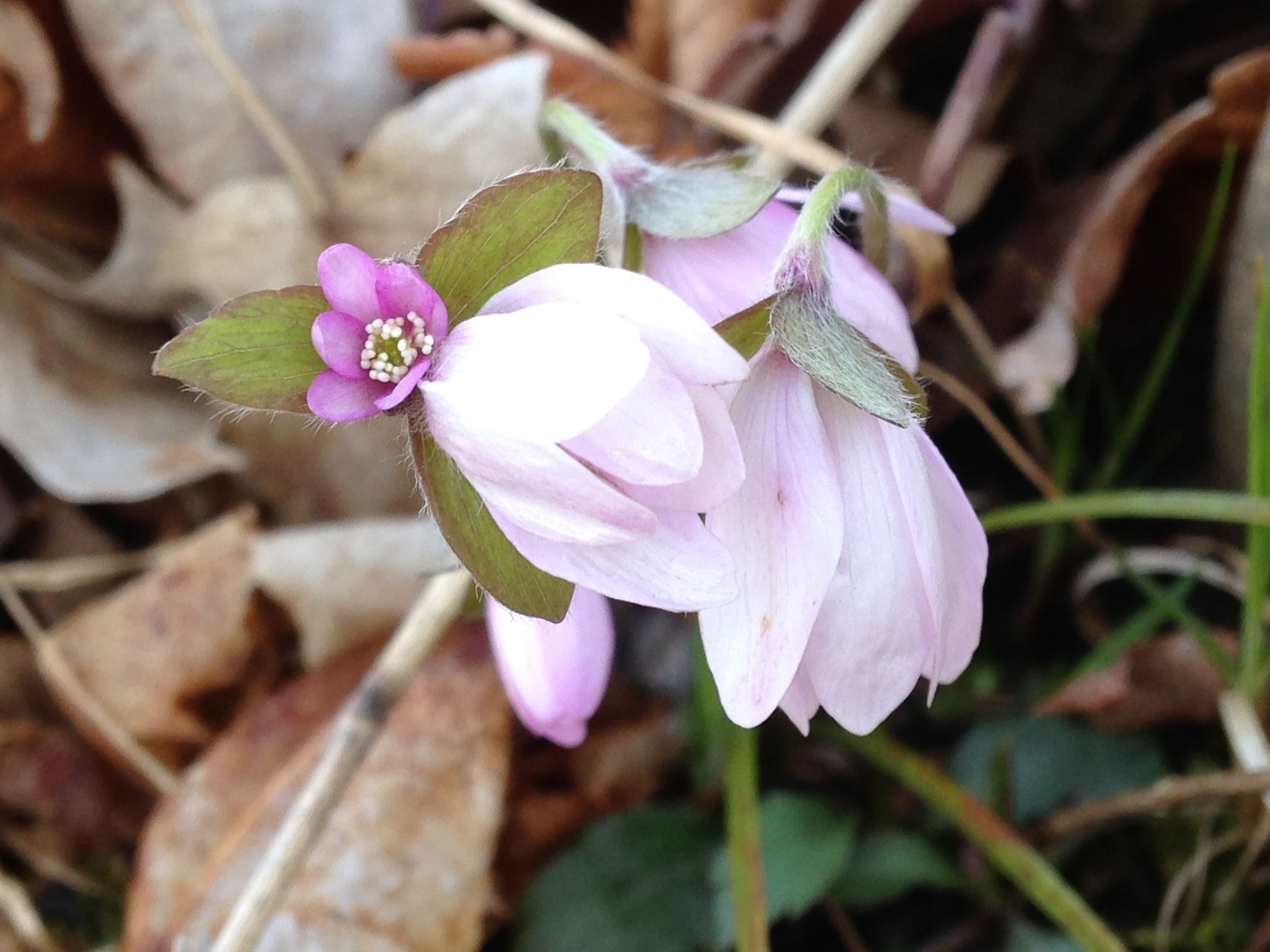First Wildflowers of 2022
I think Crocus’ (Crocus spp.) and Snowdrops (Galanthus spp.) may be beautiful, but they are certainly overrated. They may herald the warmer months and the coming of Spring, but they’ve been planted as early evidences and don’t have the same force that some of the native plants have.
This spring has been cooler than last year, but seems to be on pace with 2020 for early season blossoms. I am noticing the leaves of Trout Lily (Erythronium americanum) along the trails and Wild Leeks (Allium triccocum) in the open woods and even the small dark shoots of Blue Cohosh (Caulophyllum thalictroides) just coming up in the deeper forests. None of the species mentioned above though have been flowering. Who did I see in flower?
My partner ID’d these flowers from memory before I could figure them out. I asked questioningly, to no one in particular, “Spring Beauty?” but that wouldn’t have been correct as Claytonia’s only have 5 petals, and usually with pink veins coming from center of the flowerhead. My partner named these other spring beauties correctly.
“Hepatica.”
Correct. It made a lot of sense. We were in an old taller wood, the flowers were low to the ground, and we had certainly seen them here before. It’s normal for me to mix things up, and confusion around these beautiful flowers is pretty common across the board.
Firstly, the flower in the mid-left of the image has 7 petals, where all the others have 6 petals. Some folks name the three green modified leaves below the petals as bracts, some folks name them sepals (the big difference between bracts and sepals is that sepals form one of the components of the calyx, and a bract is a smaller leaf-like structure from the axil, out of which a flower’s stalk arises) and one book I have just calls the petals and sepals ‘tepals’, and the bracts, bracts. The word tepal is used when the petals and sepals look alike and are the same colour.
Not only are the names of the parts debated, there are many various possible names of the flowers, including Hepatica americana, Hepatica acutiloba, Anemone hepatica, Hepatica nobilis var acuta, Hepatica nobilis var obtusa.
On top of this there are the two varieties of this plant, one with round lobed leaves, and another with pointier lobes. The two varieties are named Round-lobed Hepatica and Sharp-lobed Hepatica. Oh, and they can hybridize (!!!).
Additionally, the Hepatica genus have all been absorbed into the Anemone genus due to similar morphologies (looking alike) and recent phylogenetic testing (looking at the molecular makeup and seeing how they are related genetically). So the new official nomenclature would be Anemone hepatica var. acuta as the plant I was observing was likely the Sharp-lobed Hepatica.
Regardless of how they will eventually be classified, or the parts named whatever names, these beautiful flowers are still a welcome sign of the change of season.


